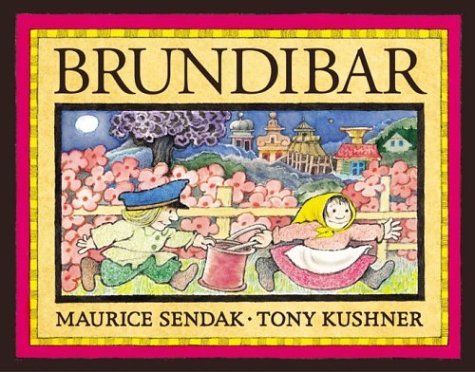
So my wife gave me Rogue’s Dad’s Little Helper Malt Liquor for Father’s Day. The back of the bottle tells the history of Father’s Day, which is fortunate, because I love reading copy with my food and drink. Here is the history:
After the death of his wife, Henry Jackson Smart was left to raise 6 young children alone. His courage, love, selflessness and dedication inspired his daughter, Sonora Smart Dodd, to organize the first Fathers Day on June 19th, 1910. In 1924 President Calvin Coolidge proclaimed the third Sunday in June as Fathers Day. President Nixon, in 1972, established it as a permanent day of national observance.
Nixon! What a softy. Anyway. I’m going to drink this now and write about the experience in real time.
Malt liquor is traditionally served in its selfsame bottle or can, with the special accoutrement of a brown paper bag. However, out of respect for Rogue Brews–they make great beers–I’ll pour it out into a nice glass. Here goes.
7:56pm: Open the bottle. The nose is reminiscent of, uh, like a quart of Mickey’s (the “gentleman’s malt”). Not a good sign.
7:57pm: Pour. The color is gold, of course, a little darker and more opaque than a standard American lager.
7:58pm: Taste. First impression: This isn’t Olde English, but it’s hardly Rogue’s Juniper Pale Ale.
7:59pm: Oh shit! The Simpsons is going to come on (yeah, I still like The Simpsons).
8:00pm: I missed the couch gag. Hang on, a trailer for Hellboy 2. This looks pretty good. But back to the malt.
8:03pm: The beer has a good taste in the mouth, but it has that undeniable corn-burn aftertaste, which is kinda unpleasant, and kinda makes you want to keep drinking the beer. Homer kills his father–but it’s just a “wonderful dream.” Dark.
8:08pm: I haven’t had malt liquor in a long time, actually, probably like seven years. When I was a college student I used to scrape together seventy cents and go to the gas station next door and get myself a quart of Hurricane (to more cosmopolitan readers: in Florida we don’t have beverages in the forty ounce variety, popularly called “forties” –we have quarts. Because that extra eight ounces will, like, really tear you up). The trick with Hurricane–or really any quart, especially malt liquor, is to drink it really, really fast, before it gets warm. When it gets warm, it’s really, really bad. Also, the last portion is no good to drink, but may be respectfully tipped out in memory to one’s fallen comrades (the “homies,” if you will). Lisa said “southern-fried succubus.” Excellent.
8:17pm: A little internet research reveals that Anheuser-Busch still makes Hurricane. Also, Hurricane received a 2.125 rating (5 is the best) at BeerPal. What kind of a loser takes the time to review malt liquor online? Dad’s Little Helper got a 3.0. Here’s a quick control: My go-to beer of choice, Sierra Nevada IPA earned a 3.355, and Budweiser, the self-proclaimed “King of Beers” earned a 1.866.
8:26pm: The Dixie Chicks, Colonel Homer…and Major Marge! Seriously, the show is way past due for being taken out back and gently shot between the eyes. Seriously.
8:30pm: King of the Hill. This show is still good. And “What Would Hank Hill Do?” is a personal motto of mine.
8:35pm: This malt liquor is only 22 ounces, not 34, but it’s never taken me this long to drink one before. I’m kinda old, I guess, or I just don’t drink that much anymore.
8:36pm: My wife appears from the baby’s room. She has put the baby to sleep (that’s not a metaphor. We’re excellent parents). She asks about the malt liquor. “It’s a malt liquor,” I say. “It’s pretty good.” She asks me why I’m smiling. I think the brew is working some magic on me.
8:40pm: Micturition imminent.
8:43pm: God, I hate Peggy Hill.
8:45pm: My wife informs me that this Rogue beverage costs the same as other Rogue beverages (like five or six dollars). So, there. There’s some info in the review.
8:46pm: I haven’t talked about the label. Who is this guy? He’s on a couple of the Rogue bottles, but it strikes me now that he looks like Tom Selleck. Or, really like Magnum (P.I.). Magnum in three ties.
8:50pm: It occurs to me now that my best friend gave me a subscription to a microbrew of the month club, where I’ll receive several microbrewed beers in the mail every other month. So, I could do reviews like these, you know bimonthly (I suppose there’s nothing to stop me from doing them all the time–still, there needs to be an occasion. I’m kinda rambling now).
8:56pm: Okay–so, as it warms, Dad’s Little Helper conforms to standard malt liquor rules–but with greater resistance. There’s a possibility of this tasting like ass pretty soon, though, I fear. I need to pony up and get down to brass tacks.
9:02pm: Final verdict: This beer will give you a buzz, but so will Hurricane, paint thinner, and standing up too fast. A lovely Father’s Day gift–who wouldn’t want malt liquor?–but not on par with Rogue’s other brews.


















